Push Back
Like everything in life, Onewheel+ has its limits. If at any time you attempt to go too fast, descend a very steep hill or ride with a low battery, your Onewheel+ will “push back.” In a push back situation, the nose of the board will lift to slow the rider down. The only way to avoid push back is to decrease your speed by leaning back. If you’d like to go a bit faster, you can switch your Digital Shaping to a more aggressive setting. This will have a higher threshold for push back.
A key distinction here is that push back is not an arbitrary speed limit which we have decided upon to hold you back, it’s actually the limit that the board can safely go. Push back is a function that is defined by a number of parameters including but not limited to battery %, grade of terrain, speed, tire pressure, rider weight. It is really important to understand that you can defeat push back. If you continue to lean forward and accelerate you are essentially asking the board to go faster than it can manage and on one wheel, there is little power left to maintain balance and stability. In order to avoid a loss of control, make sure you ease up when you experience push back and you’ll be good to go.
WARNING: Ignoring safety warnings, including push back, may result in loss of control, serious injury or death.
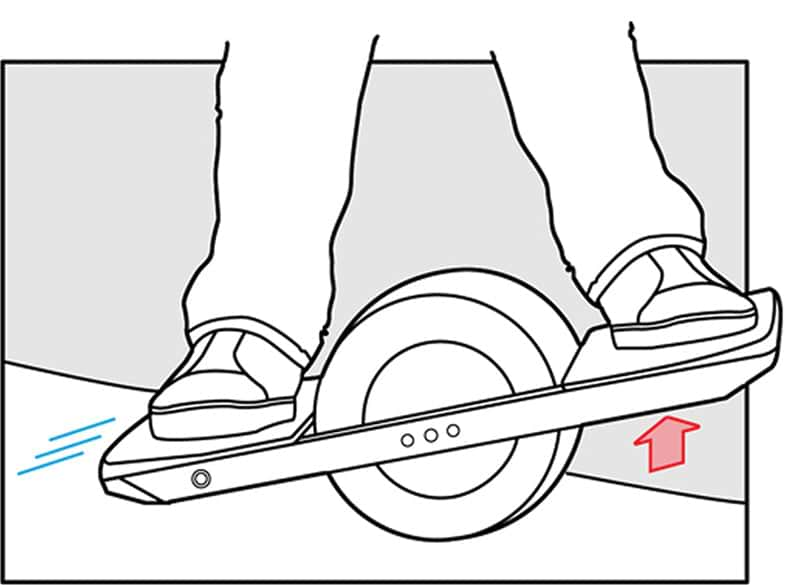
Full-Battery Push Back
When the battery is fully charged and you continue to charge it through regenerative braking (e.g., traveling downhill), you may experience “Full-Battery Push Back.” This is to prevent overcharging the battery cells. If this happens, simply switch your Onewheel+ OFF and ON again, and travel up the hill for a few moments to expend some of the charge. You will now be able to continue riding downhill.
WARNING: Never attempt to ride down a long or steep hill with a freshly charged Onewheel+. Loss of control or damage to your Onewheel+ may occur.
Low-Battery Push Back
When your Onewheel+ battery is extremely low, it will perform a much more aggressive push back and will become inoperative. This means a full battery charge is needed.
WARNING: Continuing to ride when low-battery push back occurs may result in sudden shutdown or damage to your Onewheel+.
Speed Push Back - Do This
Push back is an important feature. Ignoring or trying to push through push back is extremely dangerous.
-
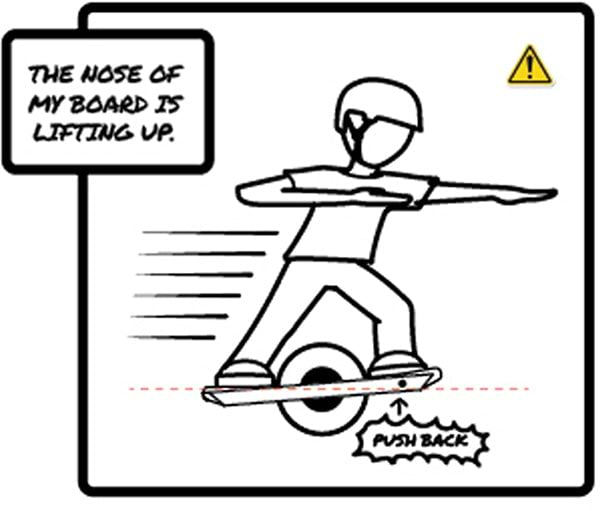
CAUTION: PUSH BACK The nose of the board lifts up to warn the rider to slow down.
-
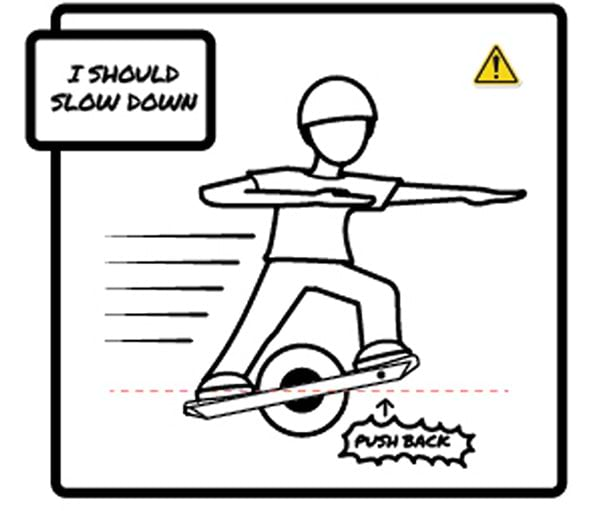
CAUTION: PUSH BACK The rider recognizes push back and plans to adjust.
-

Rider shifts weight to the back foot in order to slow down.
-
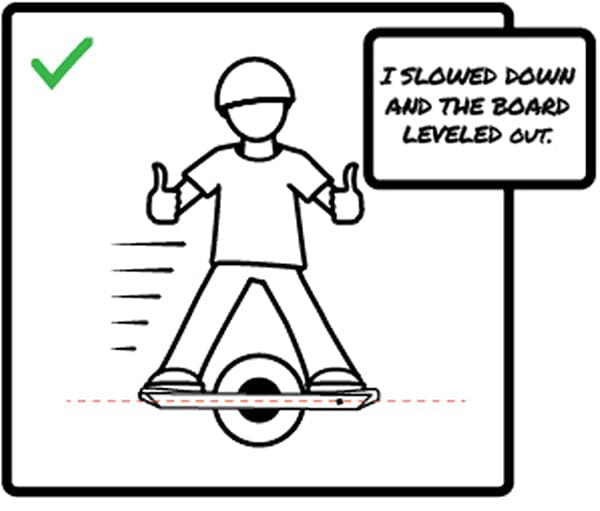
Rider has slowed down and the board returns to riding normally.
Speed Push Back - Never Do This
Push back is an important feature. Ignoring or trying to push thrugh push back is exremely dangerous.
-
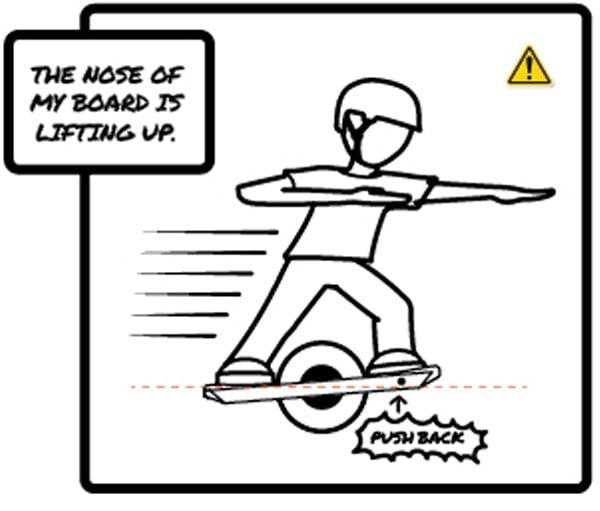
CAUTION: PUSH BACK The nose of the board lifts up to warn the rider to slow down.
-
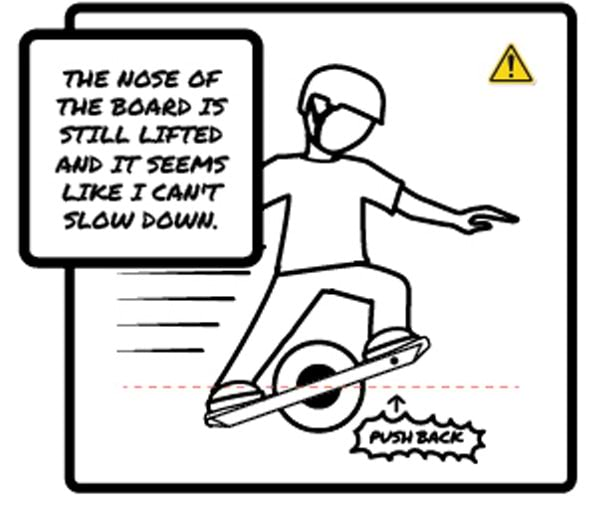
WARNING: DO NOT IGNORE PUSH BACK If the rider’s weight continues to be forward the board will continue to give the rider push back.
-
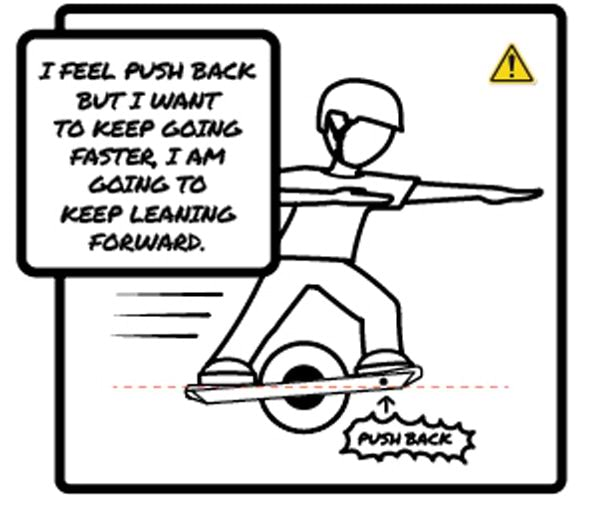
WARNING: DO NOT IGNORE PUSH BACK Rider leans weight forward to accelerate. Board continues to try to push rider back.
-
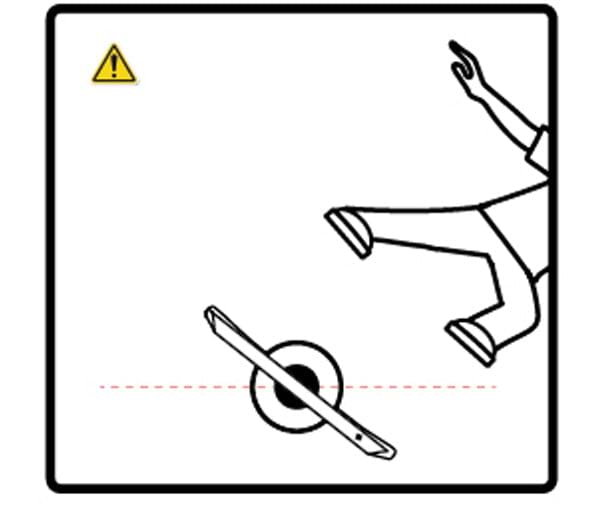
WARNING: DO NOT IGNORE PUSH BACK Ignoring safety warnings, including push back, make result in loss of control, serious injury or death.
Full Battery Push Back - Do This
Push back is an important safety feature. Ignoring or trying to push through push back is extremely dangerous.
-
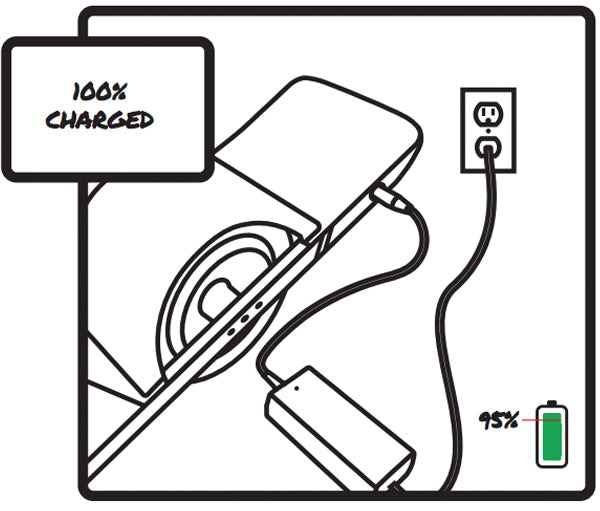
Onewheel is 100% charged.
-
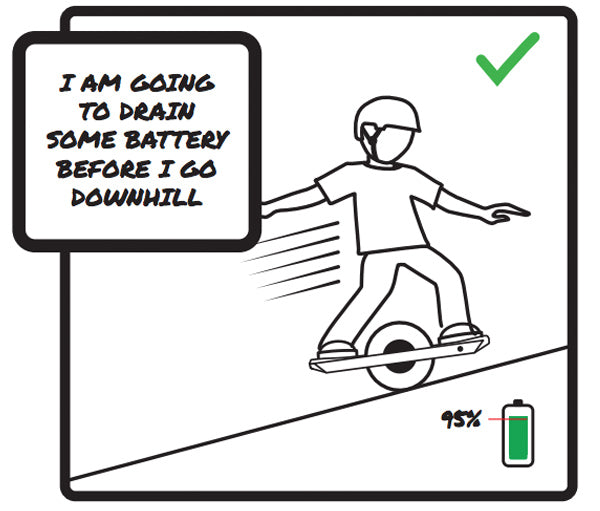
CAUTION: PUSH BACK Ride uphill until the batter is below 95% charged.
-
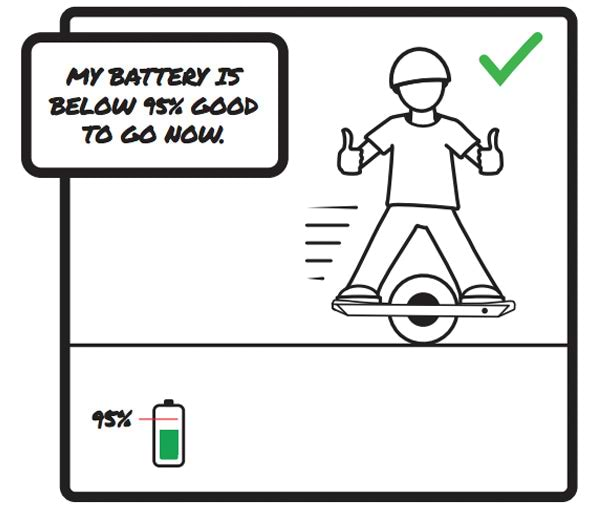
After draining the battery under a 95% charge, the battery is ready for regenerative braking.
-
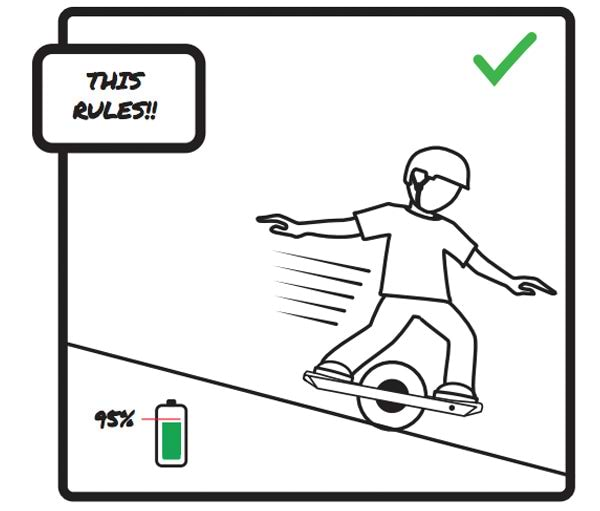
Good to go, have fun.
Full Battery Push Back - Never Do This!
Push back is an important safety feature. Ignoring or trying to push through push back is extremely dangerous.
-
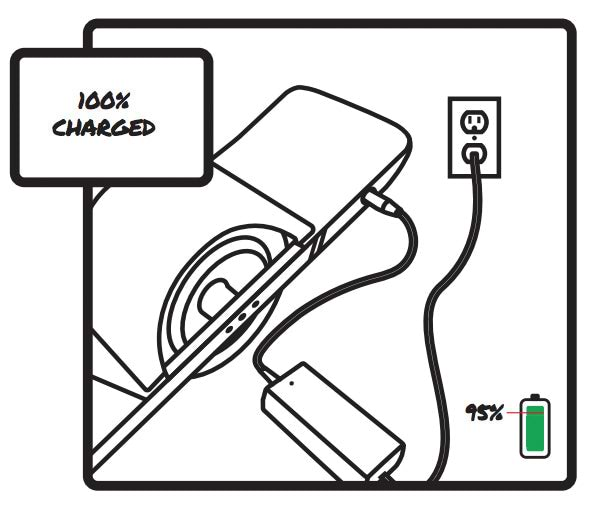
Onewheel is 100% charged.
-

WARNING: DO NOT IGNORE PUSH BACK The nose of the board lifts up to warn the rider the battery can’t handle any more regen braking.
-
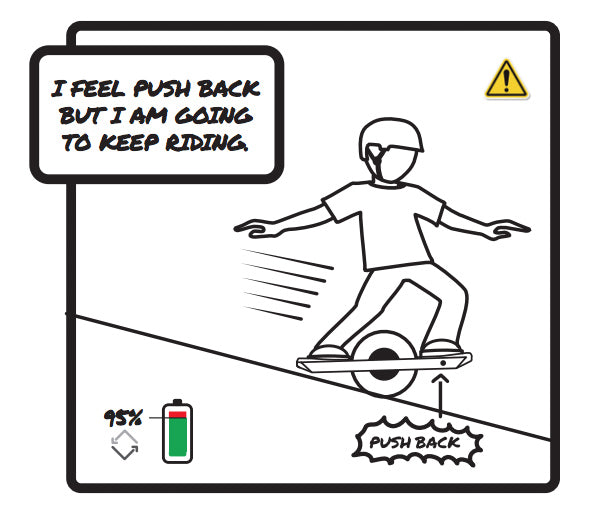
WARNING: DO NOT IGNORE PUSH BACK If regenerative braking continues the board will continue to push back.
-
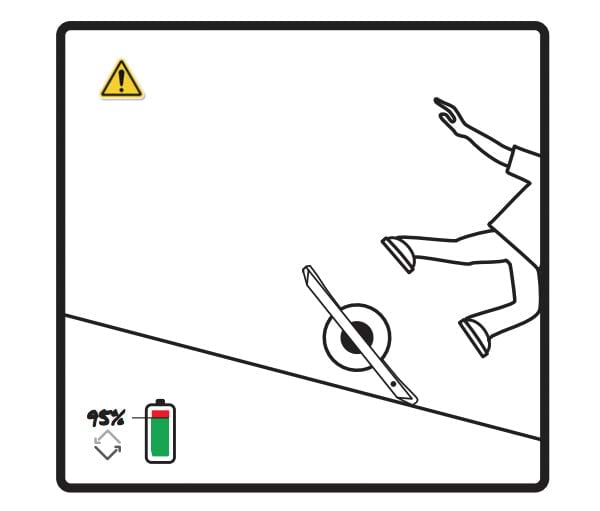
WARNING: DO NOT IGNORE PUSH BACK Ignoring safety warnings, including push back, may result in loss of control, serious injury or death.





















